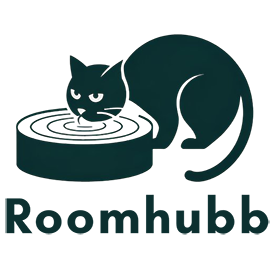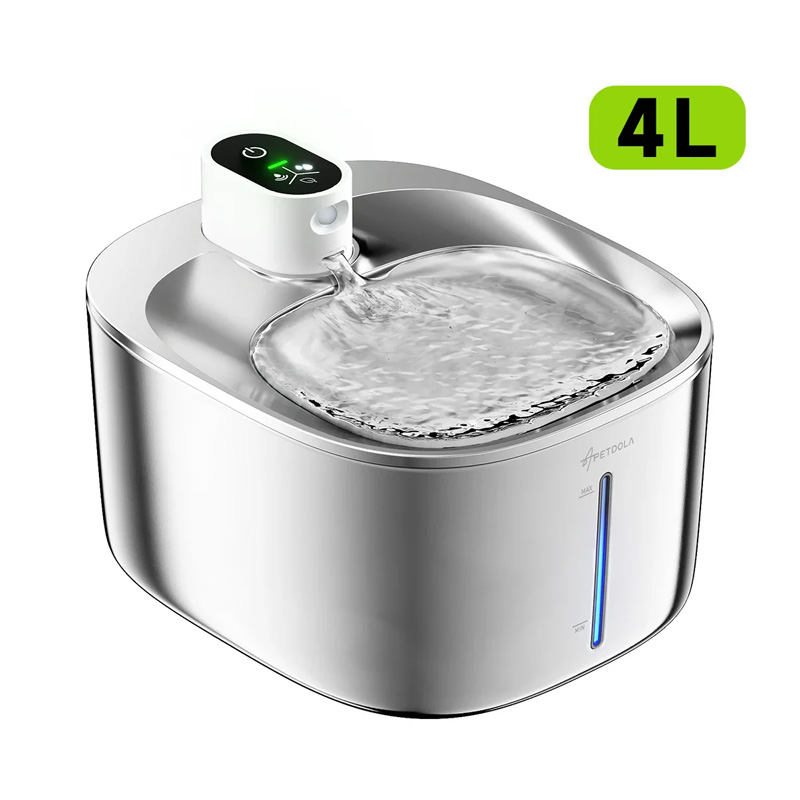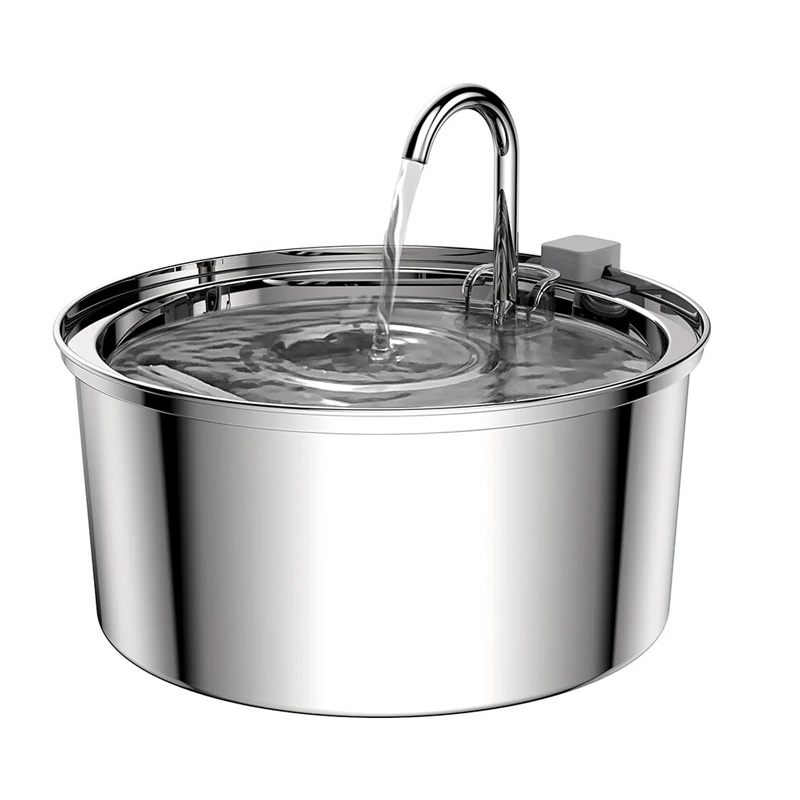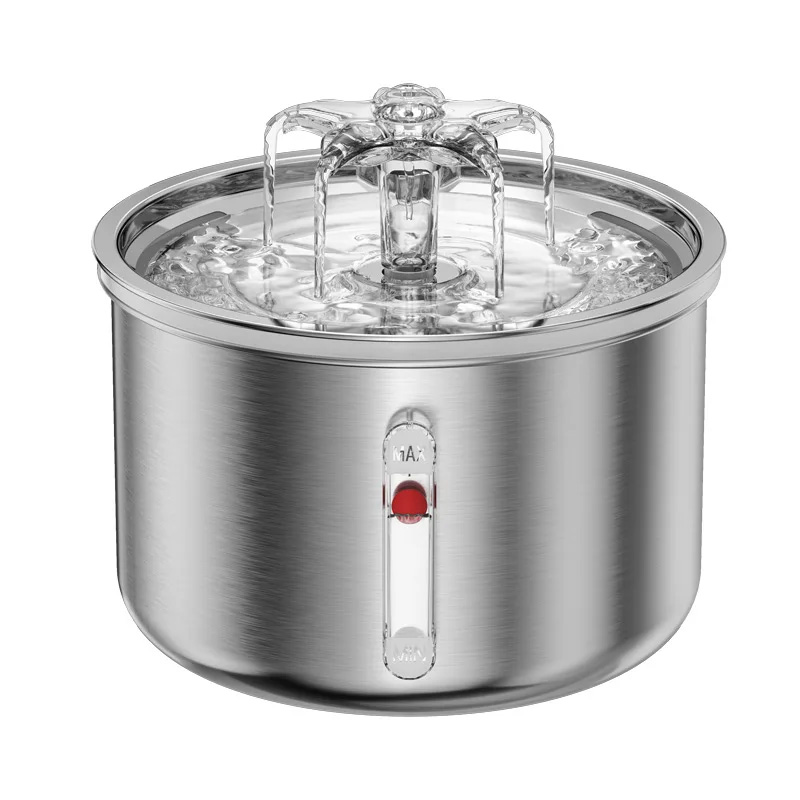Wiki Pet
Why You Should Use Ceramic or 304 Stainless Steel Water Bowls for Cats
Using plastic bowls for your cat’s water isn’t necessarily wrong, but in the long run, it’s not the healthiest choice. It’s time to reconsider this habit and switch to 304 stainless steel or ceramic bowls to eliminate microplastics from your cat’s water and ensure better long-term health.
In this article, we’ll explore why ceramic and 304 stainless steel (food-grade stainless steel) bowls are the ideal choices-far superior to ordinary plastic ones-when it comes to providing safe, clean water for your cat.
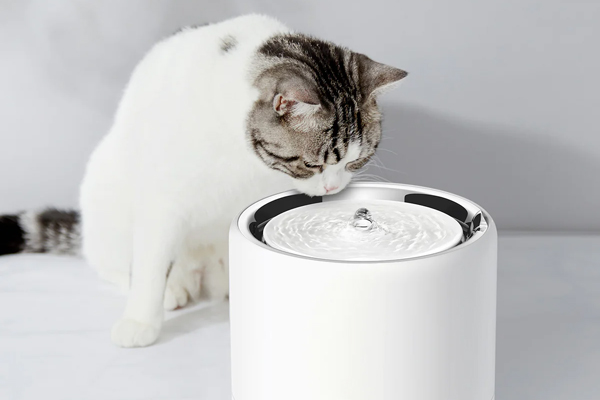
Safe for health – Top priority
Your cat’s health should always come first. It’s important to realize that not all materials are safe for prolonged use, especially when used to hold drinking water.
Ceramic and 304 stainless steel bowls are BPA-free. BPA (Bisphenol A) is a harmful chemical commonly found in cheap plastics. It can leach into water, potentially disrupting the endocrine system and increasing the risk of serious health issues such as hormonal imbalances, liver failure, or kidney disease in cats.
Furthermore, both ceramic and 304 stainless steel are chemically inert, meaning they don’t react with water, food, or common cleaning agents. This ensures there’s no chemical leaching into the water, even with hot liquids or long-term use. The harmful effects of BPA on cats’ health have been analyzed in detail. If you are interested, you can refer to it.
Also, if plastic bowls are exposed to high temperatures or direct sunlight, BPA can leach into the water more rapidly, making it even more hazardous when consumed by your cat.
Easy to clean – Odor-free and bacteria-resistant
Unlike plastic, ceramic and 304 stainless steel do not retain odors and are very easy to clean. The mineral build-up and scale commonly seen in older plastic bowls are much less likely to occur on the smooth surfaces of high-quality ceramic or stainless steel.
Because these materials are non-porous, they leave little room for bacteria to cling or multiply, which is especially important for preventing urinary tract or digestive diseases in cats.
If your bowl includes a filtration system, even better – bacteria are less likely to enter the water, providing an extra layer of health protection for your cat.
Both materials are also dishwasher-safe, saving you time and effort in cleaning, without the risk of warping or damage like with plastic bowls.
Encourages cats to drink more – Prevents diseases
Many pet owners don’t realize how sensitive cats are to odors, even very faint ones from plastic or stale water. Over time, plastic bowls often develop an unpleasant smell that can make cats feel unsafe, causing them to avoid drinking.
Providing your cat with fresh, odor-free water makes drinking more enjoyable and natural. You can also refer to previous guides on water bowl placement to further encourage your cat to hydrate.
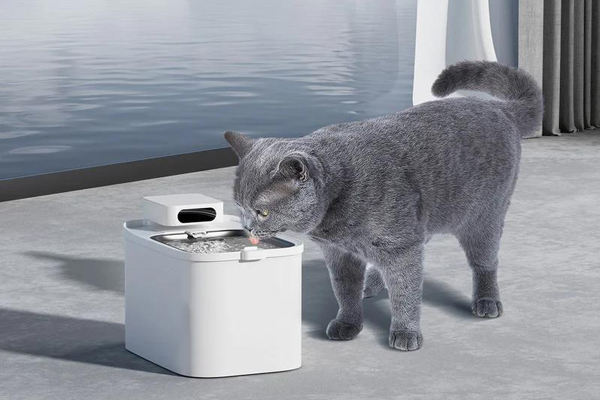
A lack of water intake is dangerous for cats. Dehydration is a leading cause of kidney stones, diabetes, bladder inflammation, and kidney failure – particularly in older cats or indoor cats with less physical activity.
In contrast, ceramic and 304 stainless steel bowls are odorless and give off a clean, neutral feel that makes cats more comfortable. As a result, your cat will be more likely to drink regularly, promoting better kidney function, metabolism, and overall health.
Maintains water temperature – Cooler for longer
One important but often overlooked factor is water temperature. On hot days, water in plastic bowls can heat up quickly, which may discourage your cat from drinking. In cold weather, the water may become too chilly, again reducing drinking motivation.
Ceramic bowls offer good insulation, keeping water cool for longer on warm days. Meanwhile, 304 stainless steel quickly transfers heat and resists changes in ambient temperature, keeping the water at a consistent, pleasant level throughout the day.
Maintaining stable water temperature makes it easier for your cat to drink and can help protect the lining of the stomach and throat, especially in cats with sensitive digestive systems.
Long-lasting and durable – A smart investment
Although ceramic or stainless steel bowls may cost more upfront than plastic, they are a smart long-term investment. Plastic bowls easily scratch, crack, or discolor over time, meaning they often need to be replaced.
In contrast, ceramic bowls are highly scratch- and wear-resistant, while 304 stainless steel is rust-proof, durable, and can last for years without affecting water quality.
Additionally, these bowls often come in elegant designs that complement modern home decor, adding both function and aesthetic value to your cat’s feeding area – something many modern pet owners care about.
Conclusion
Choosing a water bowl might seem like a small decision, but it can have a profound impact on your cat’s health, habits, and quality of life. Ceramic and 304 stainless steel bowls are clearly the best options available, offering unmatched safety, convenience, and durability.
Pay attention to even the smallest details – because it’s often the little changes today that lead to a healthier, happier cat tomorrow.
If you’re considering upgrading your cat’s water bowl, don’t hesitate to choose ceramic or 304 stainless steel. It’s not just another pet accessory – it’s an investment in your cat’s health and longevity.
